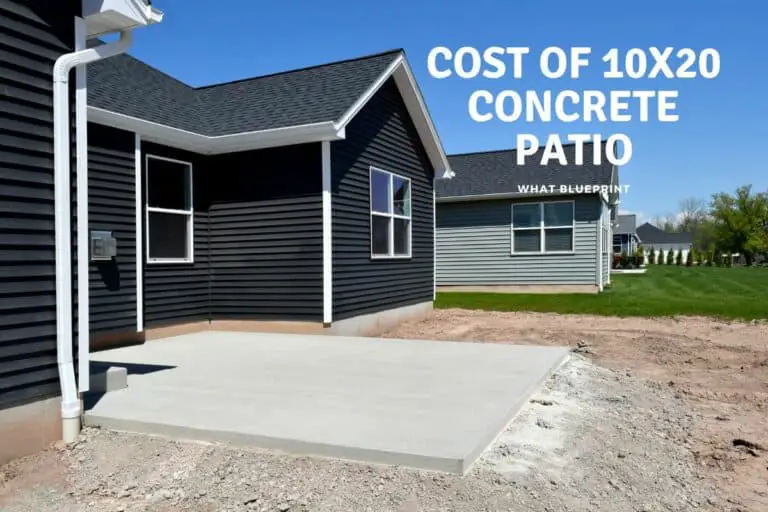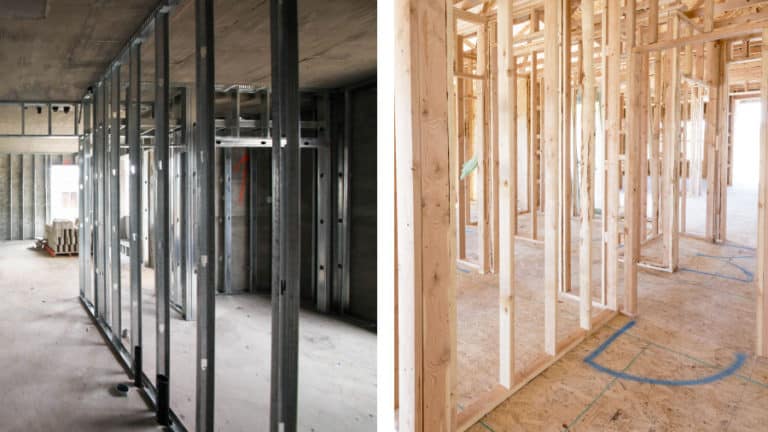9 Reasons To Get An Architect (And 4 Not To)
Whenever somebody thinks of a profession related to buildings, the first thing that comes to mind is always an architect. The architect is the professional with the deepest understanding of how buildings actually work and what buildings actually need. The question now is how essential this expertise is and if there are any drawbacks to hiring an architect.
For the most part, having an architect will be of the utmost importance and is actually a requirement. Most, if not all, countries require that your building is designed by a licensed architect. There may be instances in which the architect and the client will come to a disagreement, but these can also be solved at the end of the day.
Read on if you want to learn more about how an architect contributes to a project or if you want to learn about how hiring an architect can also be a drawback sometimes.
Reasons to get an architect
Listed below are the reasons why you should get an architect. These reasons are the general benefits that an architect can individually bring to your project. This doesn’t mean that the architect will provide all of these benefits to the client. It depends on your agreement with the architect on how much they will be responsible for the entire project.
1. Architects sees and uses the bigger picture
When an architect plans a project, they don’t just limit themselves to the site. Instead, at the beginning of a project, they observe things from a city scale down to a neighborhood scale and then lastly down to the lot scale.
This may not seem important to the client but what this observation does is that it gives the architect good insight and basis by taking into account the different factors that could affect the building.
These considerations can range from environmental (ex. weather, flooding patterns) to cultural (ex. social practices, current usage, community profiling). The architect figures out how the building can address all of these factors while meeting the client’s needs.
Aside from this, architects design in a way that is synergistic with other professions. Other professions, such as landscape architecture or interior design, rely on the architect’s decisions to properly practice and contribute a design for the building, specifically the interiors or the building’s outside environment.
This is important to understand as a client because it’s important to trust the architect as the project’s cornerstone professional. Think of an architect as if they were the director.
2. Architects sees opportunities
When a client asks the architect to create a project for them, the architect first and foremost prioritizes meeting those requirements. While meeting those requirements, an architect will notice that something could be done better for the building and project as a whole. If the requirements of the client were to be the dots, then the architect has the experience and the expertise to connect those dots.
To further explain this point, let’s view a building as something composed of different parts, aspects, functions, intentions, etc. Throughout the design process, the architect will see how these different parts can play to each other’s strength or how certain additions to the building can benefit all these parts as a whole.
For example, if you own a commercial building, the architect observes where the people actually go through, during what time human activity is highest, what kind of access they need, etc. Architects use these observations as an opportunity to design the building in such a fashion that maximizes a certain aspect that a client wants (efficiency, ease of use, comfort, etc.)
Check out our article on “How Creative are Architects?” for more.

3. Architects are designers
The main difference between architecture and engineering is design. Engineers are more suited to build roads and bridges because they’re all about efficiency. When it comes to architecture, the architect attempts to balance efficiency with beauty.
When an architect designs, it’s not as simple as making something beautiful; it’s also about making something work beautifully.
This may sound like an exaggeration, especially to clients, but an architect always attempts to design, in a certain way, to meet the client’s objectives while achieving something more.
An example of this would be designing based on your activities as a person. As an architect learns more about your day-to-day life, what they can do is to make the building and such a way that supports that sort of lifestyle while at the same time enriching it.
Check out our article: “Does Architecture Require Drawing Skills?” for more on this topic.
4. Architects are well-equipped to execute your vision
Architects have all the necessary skills, experience, and expertise to ensure that your vision is achieved in the best way possible.
An architect may prioritize different aspects. Whether they prioritize looks over efficiency or the other way around, at the end of the day, it still meets the client’s briefing requirements while offering something else entirely.
If you think about it, there are an endless amount of ways to reach a floor area with 100 square meters or for a facade to fall under a certain aesthetic. It’s the architect’s job to make sure that their decisions, no matter how different or in accordance with whatever they prioritize, all add up together to meet the client’s vision.
This may sound like the previous point, that architects are great for opportunities, but we’re framing this in such a way that it’s based on the client’s vision.
For example, a client wants a building that is designed to be energy efficient. Based on the building’s usage and requirements, the architect makes modifications to ensure that every expenditure of energy is used to its maximum potential. Something as simple as reducing the distance for the transportation of goods within a building or strategically placing the lights will save a considerable amount of energy in the long run.
5. Architects make things easier
Upon giving the architect the briefing, they’ll be in charge and responsible for nearly everything related to the project. The architect only answers the client, the construction manager, the building official, and the structural engineer when it comes to their decisions.
Remember that projects can range from months to even years. It’s unlikely that the client can constantly know what’s happening with the project, so the architect is the one who handles and constantly gives updates. Throughout the project, their range of work can include the legal documentation of the project, the design, and coordinating with the different professionals.
This makes it a lot easier for the client because the client only really needs to discuss payment and cost quotations with the different fields involved, while it will be the architect who will actually be working with these professions.
6. Architects can increase value
Aside from location, one of the biggest contributors to the value of a real estate property is the structure’s design. The design of a structure can greatly increase its value because, if you think about it, the design is the actual physical building itself.
An architect knows that the design of the structure can help contribute to the value of your house. However, since a design’s beauty is subjective, there is no real way to integrate this into a cost-efficiency calculation by the contractor.
If you are the client, as long as you personally find the design beautiful, then there surely will be someone that will also find a design beautiful in the future. Remember that the driving factor that determines if people would want to buy a house is if they can actually imagine themselves living in that structure. All the other things like location, amenities, etc., are conducive to their current and future lives.
This is why real estate agents get their prices based on location, amenities, and design (in that specific order).
If you think about it, the design features that the architect implements for the projects are usually used as one of the structure’s main selling points. An example of these selling points could range from beautiful views, efficient designs, etc. These features also contribute to the value of the real estate property.

7. Architects will design things that last
Buildings are supposed to last decades, and some buildings even last centuries—Architects design in such a way that also considers the future.
This might sound like an exaggeration; however, an architect sees where the neighborhood’s projected environment will be and how your current structure can adjust to the needs.
This is especially true for commercial buildings and skyscrapers. The architect has to ensure that the building can serve its function in the long run because it’s a game plan of cost-efficiency and returns.
The best way to do this is to make sure that the building is built or designed with the latest technologies and design theories.
An example of this is the trend of green architecture and being environmentally friendly. Sooner or later, there will be changes as to the requirements regarding how a building should function.
The architect uses contemporary trends in their design, which aren’t actually required for now, but given enough time and seeing its benefits, there is a tendency that such trends will turn into a requirement.
When this happens, the transition and the modifications applied to the building will be minimized. This entails lesser costs and, at the same time, proves how an architect designs with the future in mind.
Check out our article on “8 Buildings That Prove It: Architecture Is An Art.“
8. Architect works for the approval of the project
The architect is in charge of ensuring that the building complies with the building code. The architect knows the building code with the back of their hand, and they can determine what needs to be done with the design. This ensures that once the building is finished, there will be no problem/issues when getting approval from the building official.
Such measures would include fire protection, plumbing requirements, mechanical requirements, utility requirements, spacing requirements, etc. The architect is the one who handles these requirements and has to make decisions on how to best accomplish them.
9. Architects are responsible and accountable
If something goes wrong in the project, the architect figures out what happened and finds out who is responsible for that error.
If the architect is the one that is responsible, then they’ll be the ones held accountable for that mistake. Some mistakes can include drafting a plan with incorrect details or miscommunicating information with the other professionals working on the project.
When this happens, the architect is the one who has to be responsible to rectify this mistake. If other professions were to make a mistake, any changes made to the project have to be coursed through and handled by the architect to ensure that it is still in line with the general plan and vision. Think of having an architect as having a safety net for your project.
These benefits are what make getting an architect so good for a project. Knowing these benefits as a client allows you to maximize your working relationship with your architect.
What you can do is play to your architect’s strengths to further allow them to perform and excel throughout the project. The key ingredient here is to ensure that you get an architect that is in line with your vision to work together well throughout the entirety of the project.
It goes without saying that getting an architect is trusting someone with your vision to build it, the architect you choose will be the one to translate your ideas into a real-world building, and you have to make sure that they are capable and have the same vision.

Why not to get an architect
Sometimes, getting an architect can come with some downsides. Most of these downsides are from either the practical or social perspectives of working with a professional in general.
What’s different about architects is that design is such a subjective topic. You’ll see in the points will be diving into how this subjectiveness can affect an architect’s performance and how it can sometimes be burdensome for a project.
1. Architects can get arrogant
There will be times when the architect may assume that they are right and ignore what the client actually wants.
This can be caused by the architect’s point of view based on their expertise and understanding. Although this is their main selling point, it introduces this aspect in which the architect’s point of view is so separated from the layman’s point of view, it will end up causing a disagreement between the two.
A clear example of this is when an architect argues that a certain space should be designed in this certain way while the client, knowing themselves, does not see themselves using the space.
This is where a fundamental theory of architecture comes into play, which is a tug-of-war of whether the building should adjust to the person or if the person will adjust to the building.
An example of this would be the urban planning trends of the mid-twentieth century. There was a camp that believed we must design cities beautifully and efficiently so that people will become efficient and behave differently. At the same time, another camp believed that people are already efficient and behave well and that buildings should follow these patterns instead.
The tricky thing about this aspect of architecture is that there is no absolute right or wrong answer. There are times that the building must change to suit the needs of the users, while at the other end, there are times in which the users must change to suit the building to maximize the building’s potential.
Most readers might think this sounds exaggerated; however, if you read the literature, the history of architecture, and its evolution. You will see just how profound the effect of this ideological clash has on how our built environments are designed.
2. Architects can be too idealistic
The biggest gap between the working world and architecture schools is that architecture schools constantly give students the freedom to design since there’s no money involved.
However, in reality, there is an actual need to fund projects because they become real structures. What happens is that the architect is still stuck in that idealistic phase.
It is an often trend that the architect is the one who makes things expensive through their design decisions, and it is the construction manager and the engineer who lowers that cost.
This results from different points of view, which is never a bad thing to have during a project. It is up to the owner to determine if the architect’s design proposal is worth the cost they will be paying to have it built, and it is up to the architect to balance their design and such a way.
Going back to the sentiment that based on the architect’s expertise, they may believe that certain aspects of a building must be a specific way. Yet, the construction manager or the engineer may have a differing opinion.
The architect will have to adjust if this were the case. However, you have to consider that this could be frustrating for an architect since they are changing something that they envisioned for your building.
3. Architects can have their own biases
It should be remembered that the sign is subjective as they say beauty is in the back and eyes of the beholder. What this means for architecture is that certain architects will have certain biases, which may be a good thing for you or a bad thing for you depending on the relationship between the architect and the client. This is why it’s important to choose your architect and know them which you can do by observing their previous works.
Certain architects only do things in a certain way, and they only believe that such things can only be done this way. Maybe it’s because that’s what has worked for them the best, or perhaps theoretically, it is what works best. However, at the end of the day, the client should always have the final say on how the design should be.
It is part of the architect’s job to convince the client that this is the best direction. The problem that arises is that what the architect comes up with is usually directed towards what the architect believes is right. In the field of design, there is no one right way of doing something. If you were to give a project brief to different architects for the same project, they would develop very different designs.
4. The project might not call for an architect
Some projects, mostly renovations, do not actually need an architect to be built. Such additional spaces are quite simplistic, and some do not even need a building permit for it to be constructed.
Since the renovation, in general, is such a small-scale project, there really isn’t much that an architect can provide or that’s outside of the box unless you provide the budget for it. If you’re going for simple additions to your house, then it’s just better to get a contractor instead and see how you can work from there.
After discussing these points, the best piece of optional advice you can use when scenarios arise is reiterating to your architect what you wanted. Most of these problems stem from a loss in translation or a communication gap that the architect tries to fill through the design.
Remember that they’re using their expertise and experience for the benefit of your project so you should also take what they say into consideration.

Famous example of the benefits of getting an architect
A famous example of the benefits an architect can bring to your project could be the Guggenheim museum. The museum is an architectural wonder created by Frank Gehry, in which he designed the museum in such a way that stood out and complimented the nearby environment.
This may not sound like much, but the way he did it and to the extent that he managed to do it was so well done that it, in fact, boosted the tourism and the general business of the district around the area, which is perfect considering that this was a government-funded project of Spain.
Famous example of the downside of getting an architect
A famous example of the downside of getting an architect would be the Villa Savoye of Le Corbusier. Without a doubt, the Villa Savoye is a beautiful building from the modernism movement during the 1960s. However, where the Villa Savoye fell short was that it was not designed for people.
Whenever it rains, water would constantly leak, and the building’s general design was hard to integrate and use and adjust to by the house owners. In fact, the house was only used for six months before it was even left over by its owners.
Client advice
Before we end this article, let’s synthesize everything that a client should do to maximize the benefits of getting the architect and minimizing its cons.
These are just a general and loose list of guidelines that you can easily keep in mind if you’ll begin working with an architect in the future:
- Get the right architect.
- Pick one with a certain style that you like (base this on that architect’s previous work)
- Make sure that you really do need an architect for this project (It’s also possible to consult with an architect rather than hire one for small scale renovations)
- Be able to build a good rapport with them.
- Communicate well with the architect.
- Give a detailed project brief
- Point out something that you want to have changed immediately
- Give comments and feedback (throughout the design process)
- Understand where the architect is coming from
Conclusion
At the end of the day, it is always more beneficial to get an architect than not getting one. Missing out on the value that they could provide and the fact that it is actually a requirement to get an architect for structural projects is a testament to how essential it is to get an architect for your project.
There may be times in which you and the architect may not see things eye to eye. The reasonable way to go about this is to bring up your different points with the architect and explain why you do not like how the architect designed that aspect of the building.
Remember that the architect is in charge of executing the client’s vision and not their own. If the architect proposes something that they feel could be potentially better for your project, you should also consider that because, at the end of the day, they’re trying to build the best project for you.
Feel free to check our are article: “Your Step-By-Step Guide: How Architects Design Buildings” as well.







